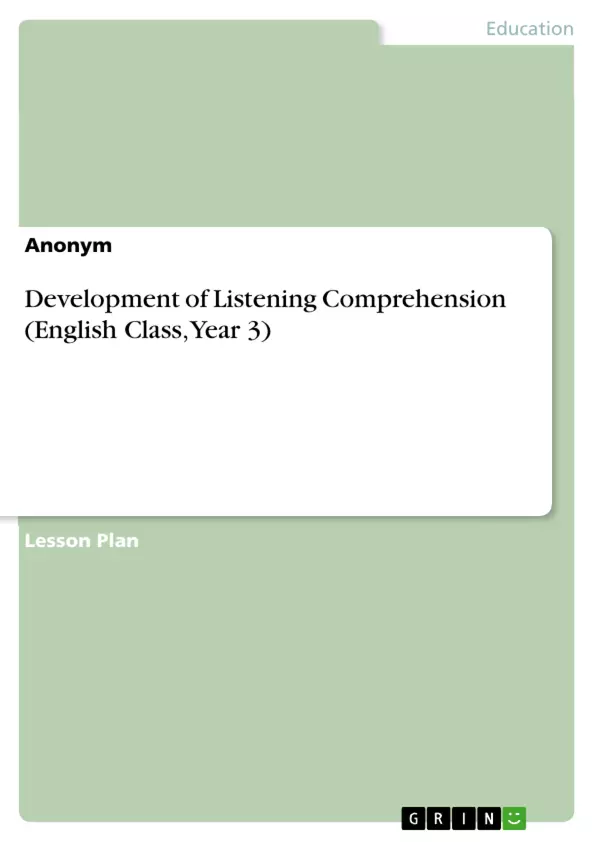With a focus on the development of listening comprehension through storytelling, this term paper analyses the children's book Walking through the Jungle by Julie Lacome. It is divided into two main sections. The first part focuses on the relevance of listening comprehension and storytelling, providing the basis for the following analysis. In the second part possibilities are displayed to include the story in a sample teaching unit for year three.
First, criteria for selecting a story will be presented. Subsequently, the role of the teacher and how one should prepare the story will be displayed. Moreover, there will be a chapter for pre-listening activities, while-listening activities, and post-listening activities for the story. Finally, the language development through Walking through the Jungle will be summarised and discussed in the conclusion.
Inhaltsverzeichnis (Table of Contents)
- Introduction
- Development of Listening Comprehension through Storytelling
- Relevance of Listening Comprehension
- Relevance of Storytelling
- Sample Teaching Unit Walking Through the Jungle
- Selection Criteria - Choosing a Story
- Role of the Teacher - Preparing a Story
- Sample Lesson Plan of the First Lesson
- Pre-Listening Activities – Introducing the Story
- While-Listening Activities – Telling the story
- Post-Listening Activities – Working with the Story
- Language Development through Walking through the Jungle
- Conclusion
Zielsetzung und Themenschwerpunkte (Objectives and Key Themes)
The term paper analyzes the children's book "Walking through the Jungle" by Julie Lacome, focusing on the development of listening comprehension in primary English classrooms through storytelling. It explores the importance of listening skills for language acquisition and highlights the role of storytelling as a valuable pedagogical tool.
- The significance of listening comprehension in language development
- The importance of storytelling as a means of fostering listening skills
- The role of picture books in promoting cultural awareness and language acquisition
- The use of a Pre-While-Post-Model to structure listening exercises
- The development of specific listening strategies for young learners
Zusammenfassung der Kapitel (Chapter Summaries)
The introduction lays out the importance of listening comprehension as a foundational communication skill for young language learners, highlighting the need for active teaching and support. It introduces storytelling as a beneficial approach to engage children and promote listening comprehension.
The chapter on the relevance of listening comprehension discusses its significance in the educational context and the need for teachers to differentiate between "hearing" and "listening." It explores different stages of listening development and the distinct strategies used by native and foreign language learners. The importance of providing suitable listening sources and the Pre-While-Post-Model for structuring exercises are emphasized.
The chapter on the relevance of storytelling highlights its role in everyday life and the primary English classroom. It stresses the adaptability of storytelling to various learning contexts and its potential to foster a positive attitude towards the English language.
The sample teaching unit chapter explores the criteria for selecting a suitable story for the classroom, outlining the teacher's responsibilities in preparing the story. It includes a sample lesson plan for the first lesson, outlining pre-listening activities, while-listening activities, and post-listening activities. The chapter concludes with a discussion on language development through the chosen story.
Schlüsselwörter (Keywords)
The primary keywords and focus topics of the text are listening comprehension, storytelling, picture books, language development, primary English classroom, cultural awareness, and the Pre-While-Post-Model.
- Quote paper
- Anonym (Author), 2022, Development of Listening Comprehension (English Class, Year 3), Munich, GRIN Verlag, https://www.grin.com/document/1338564



